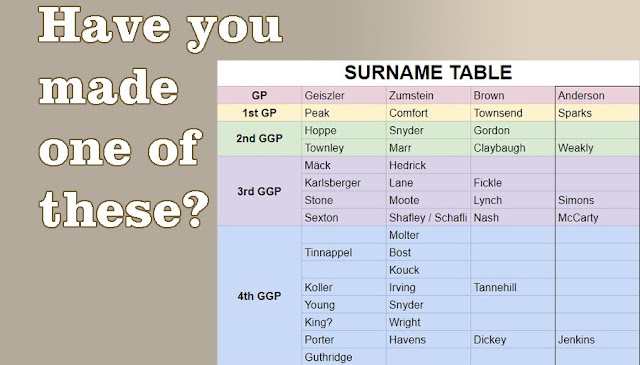Over 80 Words to Describe Your Ancestor's Facial Features
How would you describe someone to another person who has never met them? Sure you can define their character and positive traits. It would be better to describe their facial features so the second person can locate the first person in a crowd.
When it comes to describing our ancestors, we need to use words that will help our family pick out their ancestor in photos or in a list of names that might mean little without mental images based on physical descriptions.
When describing facial features, start with the easiest to describe first - eye color. Whenever possible, don't settle for dull words like blue and brown. Be more specific.
Once you've described the eye color, provide details about the eye shape. This can be challenging but give it a go.
Once you have the eyes covered, zoom out and focus on the face shape. In make-up, there are seven basic face shapes, but in writing, we can be more creative with our choices. Granted, some words are a bit inflammatory, so be careful which ones you use. In the meantime, let's have a little fun exploring the possibilities!
Okay, pumpkinesque and marshmallow-shaped are probably not the best choices for our ancestors. I included them for laughs, to check if you were reading, and to trigger other descriptive words you could use.
I like words such as moon-round or flat. I especially when like these words when combined with another adjective such as broad, moon-round or narrow, flat face.
Next move on to Skin color and texture. It's not enough to say white or black. That does nothing to account for the spectrum of skin colors, but also take into account the texture of the skin.
Many photographs can provide a hint as to the skin color and complexion of an individual. Isn't umber, baby-soft a better way to describe dark, soft skin? I think so.
One final feature of facial descriptions is the hair, especially on men in past generations. Choosing the right words about the hairy side of a face can nail down a written portrayal of a man.
Give it a go. Describe the mug of the man or woman you call ancestor. When you do, put a link in the comments to your blog post, Facebook postings or Instagram photo with your description.
Once again, the essential thing to remember when describing you ancestor is to do your best to help paint a picture for your readers. If someone disagrees with your word choice, tell them to go write their own story!
What great words have you used to describe your ancestor? Be sure to add yours or share the description in the comments section.
Further Reading - Describing Our Ancestors Series:
Once you have the eyes covered, zoom out and focus on the face shape. In make-up, there are seven basic face shapes, but in writing, we can be more creative with our choices. Granted, some words are a bit inflammatory, so be careful which ones you use. In the meantime, let's have a little fun exploring the possibilities!
Okay, pumpkinesque and marshmallow-shaped are probably not the best choices for our ancestors. I included them for laughs, to check if you were reading, and to trigger other descriptive words you could use.
I like words such as moon-round or flat. I especially when like these words when combined with another adjective such as broad, moon-round or narrow, flat face.
Next move on to Skin color and texture. It's not enough to say white or black. That does nothing to account for the spectrum of skin colors, but also take into account the texture of the skin.
Many photographs can provide a hint as to the skin color and complexion of an individual. Isn't umber, baby-soft a better way to describe dark, soft skin? I think so.
One final feature of facial descriptions is the hair, especially on men in past generations. Choosing the right words about the hairy side of a face can nail down a written portrayal of a man.
Give it a go. Describe the mug of the man or woman you call ancestor. When you do, put a link in the comments to your blog post, Facebook postings or Instagram photo with your description.
Once again, the essential thing to remember when describing you ancestor is to do your best to help paint a picture for your readers. If someone disagrees with your word choice, tell them to go write their own story!
What great words have you used to describe your ancestor? Be sure to add yours or share the description in the comments section.
Further Reading - Describing Our Ancestors Series:
 |
| Photos on this page courtesy of Creative Commons contributor - simpleinsomnia |




Thank you for the great reminder to go the distance in describing and heading a photo ~ Sharon
ReplyDeleteGreat post! I can definitely do better in my descriptions of my ancestors! Actually, I'm not sure I have ever really sat down and described one of them in the way you mention. Hmm...food for thought!
ReplyDeleteSue (KindredPast)